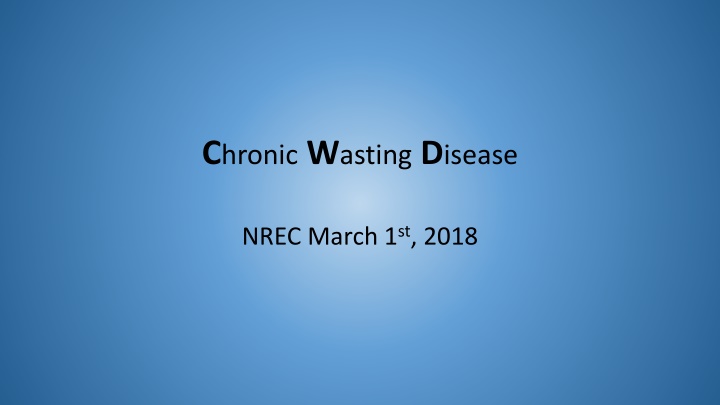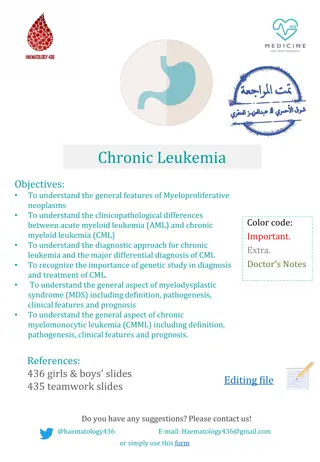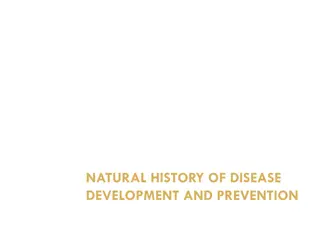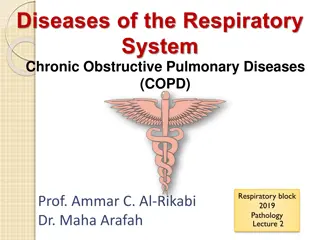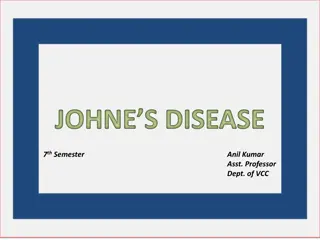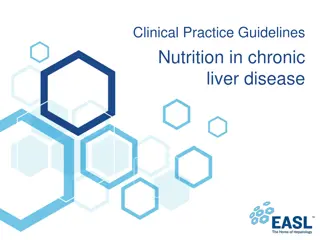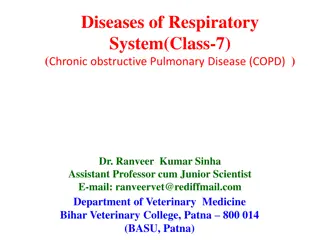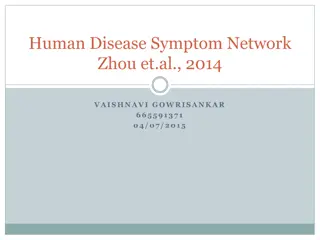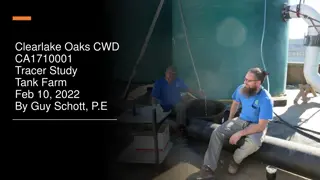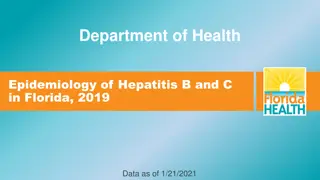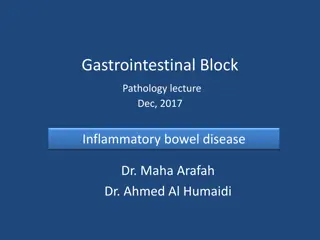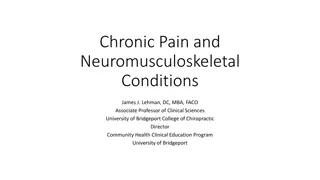Chronic Wasting Disease (CWD)
Chronic Wasting Disease (CWD) is a transmissible spongiform encephalopathy affecting cervids and other animals. The disease was first identified in the mid-1960s and has since been a concern in wildlife populations. CWD is caused by a mutated prion protein that leads to neurological degeneration. While there is no evidence of CWD transmission to humans, precautions are taken to manage and monitor the disease in animal populations.
Download Presentation

Please find below an Image/Link to download the presentation.
The content on the website is provided AS IS for your information and personal use only. It may not be sold, licensed, or shared on other websites without obtaining consent from the author.If you encounter any issues during the download, it is possible that the publisher has removed the file from their server.
You are allowed to download the files provided on this website for personal or commercial use, subject to the condition that they are used lawfully. All files are the property of their respective owners.
The content on the website is provided AS IS for your information and personal use only. It may not be sold, licensed, or shared on other websites without obtaining consent from the author.
E N D
Presentation Transcript
Chronic Wasting Disease NREC March 1st, 2018
Transmissible Spongiform Encephalopathy Cattle BSE Sheep Scrapie CWD some Cervids Others in Mink, Cats, etc.
History of CWD First identified in elk of wild origin in the mid 1960 s at Colorado State University The origin of CWD is unknown Hypotheses: 1. a natural disease of elk and deer 2. from scrapie infected sheep 3. deer/elk fed pelleted feed with TSE in it 4. spontaneous genetic mutation deer prion
History of CWD 2002 CWD Response Plan developed 2008 first captive deer found positive for CWD in Michigan (Kent County). Lower Peninsula baiting ban initiated. 2012 CWD Response plan revised 2015 First free ranging deer positive for CWD (Ingham County). Core and management zones created. CWD later identified in Clinton county deer also. 2015-16: 4 positive deer in Clinton Cty, 5 positive in Ingham 2017 CWD found in Mecosta County cervid facility (may have been wild deer heads) 2017 CWD identified in Montcalm and Kent Co free ranging deer (36 positives in Montcalm County in 2017). No positives in these counties prior to 2017. 2017 CWD identified in second Mecosta cervid facility Feb. 7 2018 Latest update on CWD numbers is 57 deer. No new suspect/positive deer since mid-January update.
What is CWD Prion Protein (PrP) A normal protein found in most cells, but more frequent in nervous system. NOT LIVING CAN T KILL PrPcwd Mutated version of protein. Mutation causes protein to mutate other normal PrP it encounters.
Transmissibility of CWD Ingestion of infectious prions via close contact, contaminated food/environment, or in-vitro (mother to offspring) Tonsils-lymph-PNS-CNS Infectious prions mutate normal prions (PrP to PrPcwd ) Infectious prions build up and destroy cells, leaving holes in brain 2-4 years between infection of animal and clinical symptoms
Transmissibility of CWD to Humans No evidence that CWD is transmissible to humans despite the frequent and long term (30+ years) consumption of venison Increases in CJS in Wisconsin likely not related Macaques study inconclusive Absence of evidence does not indicate safety, merely suggests there is no acute effect Further mutations possible (how Mad Cow formed)
Variability in Transmission Direct: (animal to animal) Indirect: (animal to environment to animal) Direct probably more important early, indirect late Role of dose
Genetic Component Genetic Resistance to CWD Naturally occurring genetic variation (PRNP gene) exists within deer and elk populations Natural resistance does not appear to be complete.
Clinical Signs of CWD Change of behavior Head tremors May carry head and ears lowered Wide body stance Walking repetitive path Pneumonia is commonly found in antemortem testing Reduced appetite Loss of body weight (poor condition) Excessive drinking and urination Increased salivation/slobbering/drooling Incoordination, ataxia, head tremors
Facts on CWD Effects adults 17 months to 15+ years Most 3-5 years old, or >15 years Both sexes No seasonality 17 month minimum incubation period Infected individuals more likely to be hit by cars, killed by predators/hunters.
Diagnostic Tests for CWD ELISA-based tests (enzyme linked immunosorbent assay) Approximately $30-$40/test Antemortem Test: Tonsillar and rectal biopsy test using IHC technology Others in development
Prevention of CWD No vaccines currently available Preventing spread/concentration of environmental contamination Can t stop natural migration of deer
Learning from Neighbors? Populations in Colorado and Wyoming infected for 30+ years 40-50% prevalence rate Some seem fine, others are on decline
Next Steps Forward Coordinating with MDNR/MDARD (at technical and leadership levels) Testing/Monitoring Management Strategies (comment on NRC Recs) Funding Education of Membership CWD Need for management How to have deer tested How to help limit the spread
